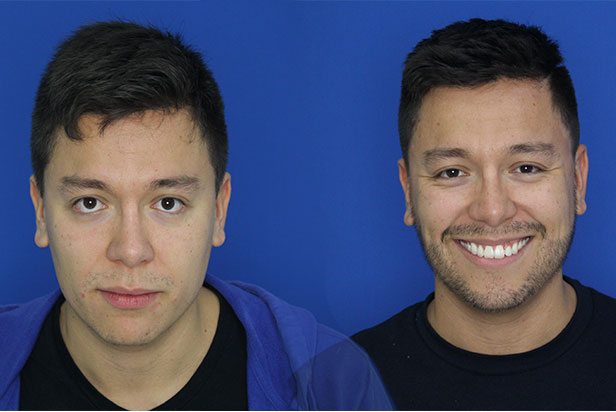Follicular micrograft for the beard, sideburns or mustache
A relatively new and interesting option is the follicular micro graft in areas of the face. The latest advances in hair transplantation have greatly expanded the options available to patients, especially men.
Nowadays the recovery or increase of hair density in areas such as the beard, mustache and sideburns has become very popular.
- In which cases is a facial transplant performed?
- ¿Where do the follicles come from?
- ¿How is this type of transplant done?
- ¿What technique is recommended?
These types of transplants are usually performed in:
- Patients with thin or scant facial hair
- Presence of post-traumatic scars on the face, for example in cases of a history of cleft lip surgery, facelift, burns, etc.
- Patients who wish to increase the existing follicular density.
As in hair transplantation, the donor area for this technique is the back and / or the sides of the head since this is the area with the highest follicular density and without genetic compromise in cases of alopecia.
The extraction and implantation procedure is very similar to the process used in hair transplantation. It is generally performed in a single session, it is an outpatient process and under local anesthesia.
Follicular units are first extracted from the donor area and then grafted onto the recipient area of the face. Important aspects of the implant must be taken into account such as the correct angle of facial hair growth, achieving the highest possible density of the area of interest and creating an irregular growth pattern, without creating perfect lines.
In addition, it is also important to note that the follicles that are implanted must be only one hair long to achieve complete naturalness.
The result is practically the same since the implant process is the same with any of the techniques used. The difference lies in the way the follicles are extracted from the donor area. Depending on the number of follicles necessary to transplant, it will be considered which technique is the most recommended in each case.
Individual Follicular Extraction Technique (FUE): In cases in which the patient wears rather short hair or in which the area to be covered is not so large, the FUE technique may be the most convenient. For this, it is necessary to shave with the # zero blade the cervico-occipital and temporal areas since we will take this area as the donor area. Each follicle is individually extracted, leaving scar points that, due to their millimeter diameter, will be practically imperceptible despite using very short hair.


- What care should I have after the procedure?
- What’s the score?
- Will I be able to shave?
- Does the facial implant last?
The disability generated by this procedure is more aesthetic than physical. Normally the first days the area of the implant is seen reddened with “scabs” around the implanted follicles. This look lasts for about a week.
Our recommendation is to wear a mask during recovery days to cover the area and to protect it from the sun’s rays. In the 10 days after the procedure, the area will normally no longer have scabs. During the following days the patient may notice a slight redness in the intervened area, however, this usually disappears after 2 weeks or earlier.
The immediate result after treatment is a 3-day unshaven looking beard. This allows the patient to assess the success of the transplant at the same time.
Approximately one month after the procedure, the area will be depopulated, that is, without visible follicles, however, what is lost is only the outer part of them since the follicle itself remains internally.
This will have a progressive growth of approximately 10% each month so the result will be gradual. The growth of all the implanted follicles will be observed approximately 10 to 12 months after the procedure.
Shaving is allowed 10 days after transplantation. The grafted facial hair will continue to grow naturally to the area where it came from.
Yes. Since the donor area from which the follicles are obtained is an area that does not present a genetic predisposition to alopecia, these follicles will last throughout life in the area where they are implanted.


